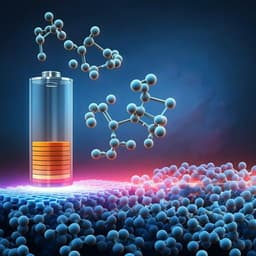
Engineering and Technology
Defect-induced triple synergistic modulation in copper for superior electrochemical ammonia production across broad nitrate concentrations
B. Zhang, Z. Dai, et al.
This cutting-edge research by Bocheng Zhang, Zechuan Dai, Yanxu Chen, Mingyu Cheng, Huaikun Zhang, Pingyi Feng, Buqi Ke, Yangyang Zhang, and Genqiang Zhang showcases a remarkable Cu nanowire array electrode that efficiently produces ammonia while treating sewage. With over 90% Faradaic efficiency and extensive operational stability, this innovative approach could revolutionize wastewater management.
Playback language: English
Related Publications
Explore these studies to deepen your understanding of the subject.







